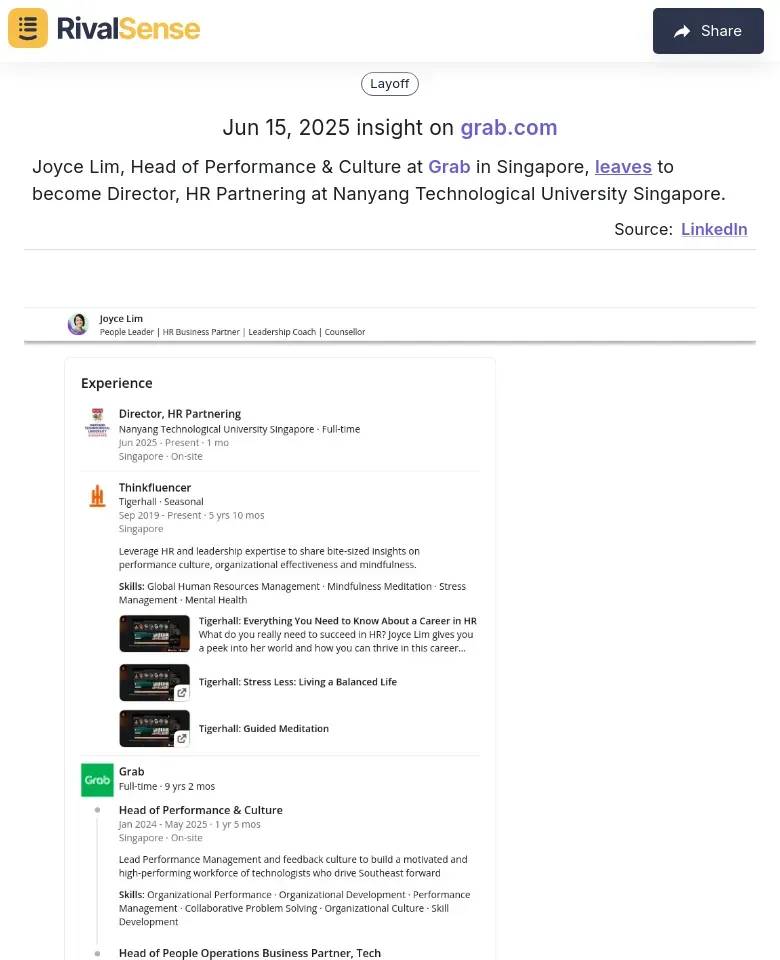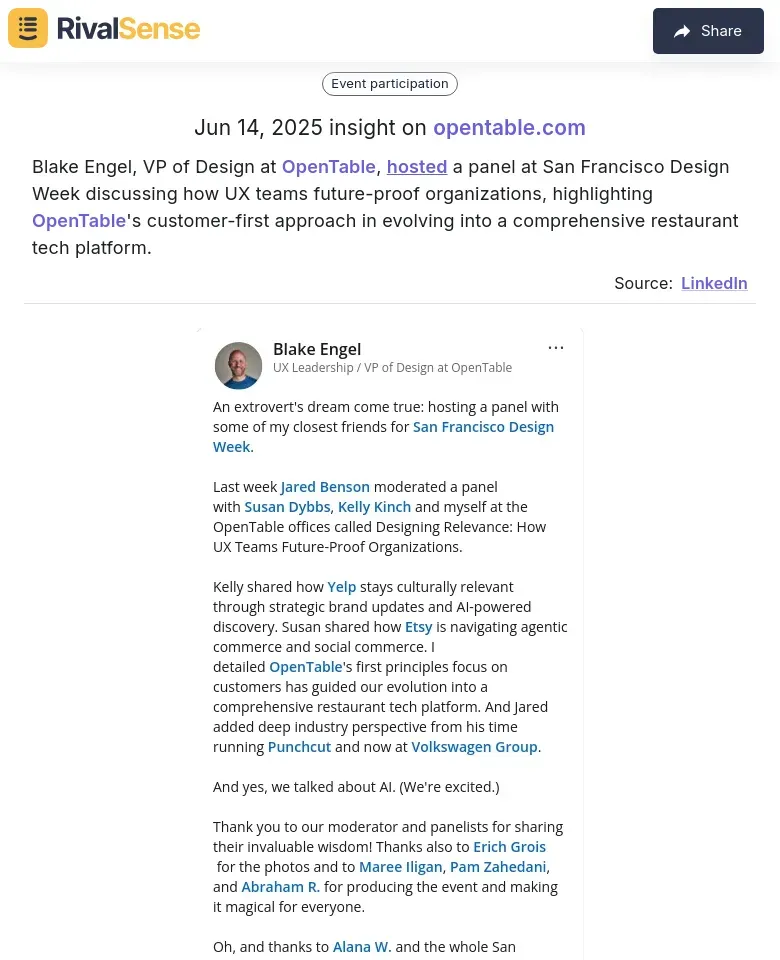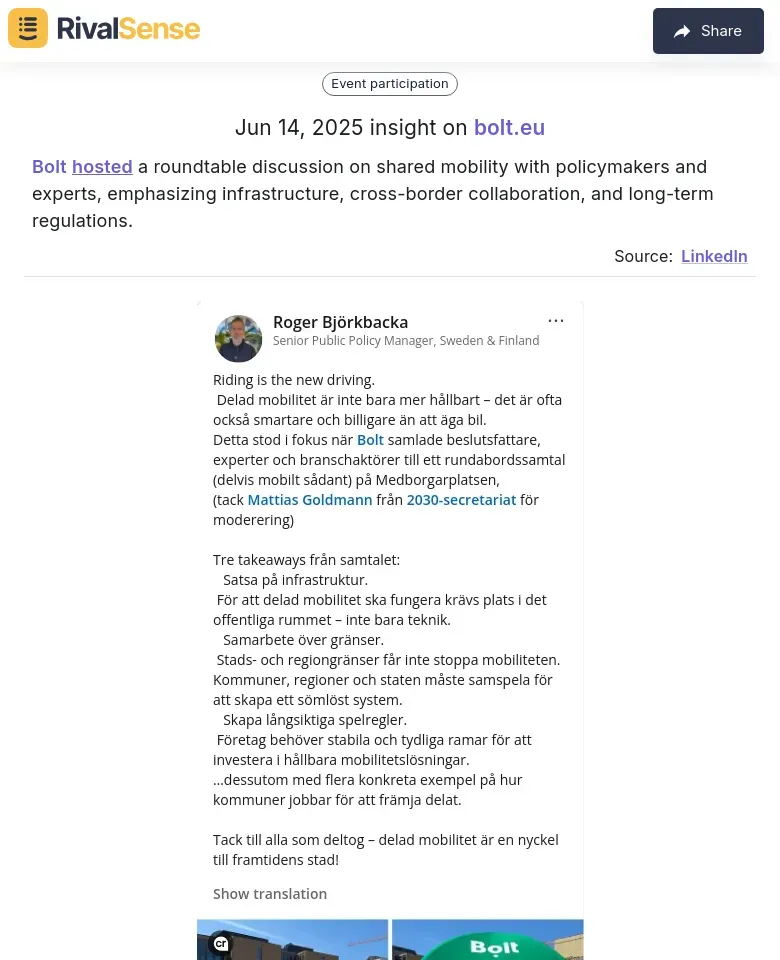LinkedIn Competitor Insights: Practical Research Templates
In today's competitive business landscape, staying ahead requires more than just monitoring your own performance—it demands a keen eye on your competitors. LinkedIn, with its professional focus, emerges as a goldmine for uncovering competitor strategies and industry trends. Tracking competitor movements on LinkedIn offers a strategic advantage, revealing their marketing tactics, partnership announcements, hiring trends, and customer engagement strategies. This data helps founders anticipate market shifts and refine their competitive positioning.
Practical steps to start include:
- 📌 Follow Competitor Pages: Stay updated on posts, job listings, and company news
- 👥 Monitor Employee Activity: Spot new projects through employee updates
- 📊 Engagement Analysis: Identify high-performing content themes
🔍 Pro Tip: Set weekly calendar reminders to review competitor activity. Benchmarking engagement rates against yours reveals content gaps to exploit.
Analyzing Leadership Changes for Strategic Insights
Executive movements on LinkedIn provide critical windows into competitors' strategic shifts. When C-suite leaders depart or join, it often signals realignments in company priorities or new market focuses. For example, a sudden CMO change might precede a rebranding campaign, while a new sustainability officer could indicate eco-initiatives. Tracking these changes helps anticipate industry disruptions before they surface publicly.
Leadership transitions also reveal cultural health. Frequent turnover suggests instability, while internal promotions indicate strong talent pipelines. Analyze new hires' backgrounds—a fintech expert joining a retail competitor might signal payment system expansions.
Real-World Example:

Joyce Lim moved from Grab to Nanyang Technological University. Tracking such HR leadership changes helps predict cultural shifts or restructuring. For founders, this intel informs talent acquisition strategies and partnership opportunities.
✅ Action Plan:
- Maintain leadership tracker spreadsheet
- Set Google/LinkedIn alerts for executives
- Cross-reference changes with industry news
- Adjust hiring/positioning based on insights
Leveraging Industry Events and Panels for Competitive Intelligence
Competitor event participation reveals strategic priorities in real-time. When rivals speak at conferences or host panels, they often unveil innovation roadmaps and market focus areas. These appearances provide unfiltered insights into their customer engagement philosophies and emerging solutions. Savvy founders decode presentation language for clues about product pipelines and target audiences.
Practical approaches include:
- 🔍 Signal Detection: Log events competitors attend to identify strategic themes
- 🎤 Presentation Analysis: Note repeated keywords and case studies in their talks
- 🔄 Messaging Shifts: Compare current speeches with past communications
Real-World Example:

OpenTable's VP hosted a panel discussing UX strategies. Such event insights expose technological pivots—here, their restaurant platform expansion. Monitoring these helps B2B leaders anticipate feature developments and differentiate offerings.
📋 Checklist:
- [ ] Catalog competitor speaking engagements quarterly
- [ ] Note audience Q&A topics
- [ ] Identify partnership announcements
Decoding Competitor Collaborations and Roundtables
Roundtables and policy discussions offer rare glimpses into competitors' long-term visions and regulatory strategies. When rivals engage policymakers, they're often shaping industry standards or preparing for market expansions. These collaborations reveal where they're investing political capital—a clear indicator of future business priorities.
Key decoding strategies:
- 📍 Strategic Importance: Policy focus areas signal investment commitments
- 🚀 Differentiation Opportunities: Gaps in their engagement reveal market whitespace
- 🤝 Partnership Clues: Co-hosted events expose alliance networks
Real-World Example:

Bolt's shared mobility discussion with policymakers highlighted infrastructure priorities. Tracking such roundtables helps CEOs anticipate regulatory changes and position offerings ahead of compliance deadlines.
✅ Action Steps:
- Map competitor policy engagement themes
- Identify underserved discussion topics
- Position your brand in uncovered niches
Practical Templates for Tracking Competitor Insights on LinkedIn
Step-by-Step Monitoring System
- 🎯 Identify 5-10 Key Competitors
- 🔔 Follow Pages + Enable Notifications
- 🛠️ Use Sales Navigator Advanced Features
- ⏱️ Schedule Weekly Review Sessions
Documentation Templates
| Tracker Type | Metrics to Record | Analysis Frequency |
|---|---|---|
| Content Calendar | Post themes, frequency, engagement rates | Weekly |
| Leadership Moves | Role changes, new hires, departures | Real-time |
| Event Participation | Conference topics, speaking roles, key messages | Post-event |
💡 Pro Tips:
- Color-code spreadsheets for quick trend spotting
- Share findings in monthly strategy meetings
- Reverse-engineer high-performing competitor content
Conclusion: Turning Insights into Action
Consistent LinkedIn monitoring transforms raw data into competitive advantages. The key lies in systematizing your approach—regularly tracking leadership changes, event patterns, and collaboration strategies reveals actionable opportunities. Founders who institutionalize this process gain 3-6 month lead times on market shifts.
Implement Immediately:
- Dedicate 30 minutes weekly to competitor analysis
- Update tracking templates monthly
- Align findings with product/marketing roadmaps
Stop manual tracking burnout! RivalSense automates competitor monitoring across websites, social media, and registries—delivering product launches, pricing changes, leadership moves, and partnerships in weekly digestible reports.
👉 Try RivalSense Free and get your first competitor intelligence report today!
📚 Read more
👉 Decoding Competitor Support Strategies: A Restaurant Tech Playbook
👉 How to Track Competitor Media Mentions & Content Alerts for Strategic Advantage
👉 Decoding Vivid Money's Crypto Rate Shifts: A Competitor Analysis Example
👉 Practical Competitive Intelligence: A Founder's Guide to Staying Ahead
👉 How Rayobyte's Proxy Growth Spurred Competitor Strategy Shifts
